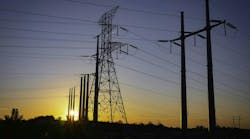American Superconductor Corp. (AMSC) announced that Vestas Australian Wind Technology Pty Ltd has placed an order with AMSC for a large D-VAR-based grid interconnection system. Utilizing 24 D-VAR modules integrated with external smart-switched capacitor banks and proprietary AMSC controls that are optimized for wind farm applications, this is AMSC’s largest order for a grid interconnection system to date. The solution will be utilized to meet local grid interconnection requirements for the 206 MW Collgar Wind Farm under construction in Western Australia. AMSC expects to deliver the D-VAR equipment to Vestas within approximately 12 months. AMSC’s grid interconnection solutions are already connecting more than one-third of Australia’s wind power to the power grid.
“We expect that additional countries around the world will adopt similar strict dynamic voltage control requirements to more effectively control power flows stemming from the utility-scale wind farms and solar power plants that are being installed around the world. This, in turn, will help expand our addressable market.”
As is the case in a number of countries around the world, Australia is increasing its commitment to utilize clean, renewable energy to lower pollutants and meet rising power demands. A recently enacted law requires that 20 percent of all of Australia’s electricity be generated from renewable sources by 2020.
Located approximately 25 kM southeast of Merredin in Western Australia, the Collgar Wind Farm is being developed jointly by Investec Bank (Australia) Limited and Windlab Systems Pty Ltd. At 206 MW, Collgar is larger than any wind farm currently operating in Australia. Construction of the Collgar Wind Farm is scheduled to commence in the first half of 2010 and be completed by the end of 2011.
Based in the city of Melbourne, Vestas Australian Wind Technology Pty is a wholly owned subsidiary of Denmark’s Vestas Wind Systems A/S. With more than 40,000 wind turbines operating worldwide, Vestas is the world’s leading supplier of wind power solutions. The company has more than 20,000 employees worldwide and annual revenues of approximately US$9 billion.
“Australia was among the first countries to adopt dynamic voltage control requirements for wind farms connecting to the utility grid,” said Timothy Poor, Senior Vice President of Global Sales and Business Development at AMSC. “We expect that additional countries around the world will adopt similar strict dynamic voltage control requirements to more effectively control power flows stemming from the utility-scale wind farms and solar power plants that are being installed around the world. This, in turn, will help expand our addressable market.”
The Collgar Wind Farm will be AMSC’s eighth D-VAR system deployment in Australia. AMSC currently is connecting nearly 600 MW of wind power to Australia’s grid, representing more than one-third of the country’s 1,700 MW of wind power capacity at the end of 2009 according to the Global Wind Energy Council. Research firm Emerging Energy Research expects that Australia’s total installed capacity will rise to 10,000 MW by 2020.
Customers utilize AMSC’s D-VAR solutions to provide dynamic voltage control, power factor correction and post-contingency reactive compensation to stabilize the power grid and prevent undesirable events such as voltage collapse. These solutions also augment the overall performance of wind farms and enable developers to meet grid interconnection requirements adopted in countries such as Australia. D-VAR reactive compensation systems are classified as Static Compensators, or “STATCOMs,” a member of the FACTS (Flexible AC-Transmission System) family of power electronic solutions for alternating current (AC) power grids. These Smart Grid solutions are able to detect and instantaneously compensate for voltage disturbances by dynamically injecting leading or lagging reactive power into the power grid.

